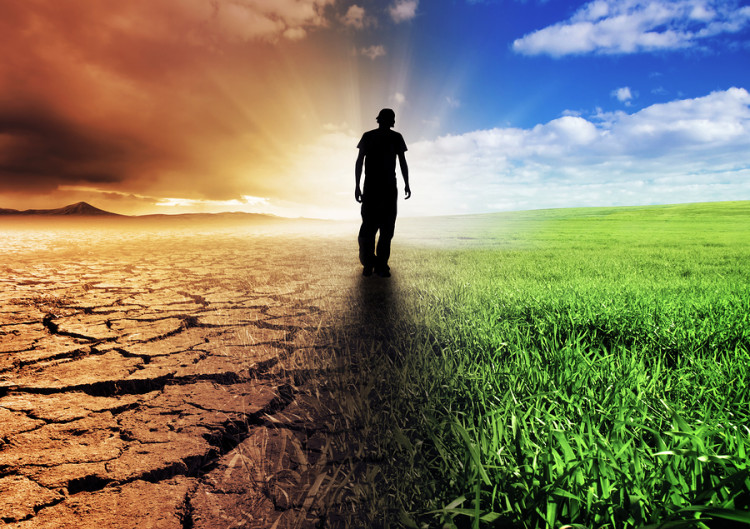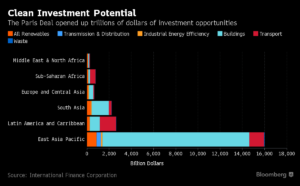Six Reasons You Should Care About the Marrakesh Climate Talks

(Bloomberg) —Officials from almost 200 countries are gathering in Marrakesh, Morocco, this week for the first major summit since they agreed in December to curb greenhouse gas pollution and limit global warming to well below 2 degrees Celsius.
The landmark deal struck in Paris entered into force Friday, with more than half of the 197 countries now having ratified the pact, significantly faster than expected. Work now starts to ensure the world actually delivers the Paris goals, and the delegates in Marrakesh are charged with fleshing out the details of the 13-page agreement. This year’s talks may not be as high profile as the Paris summit but here are six things to look for.
Writing a Rulebook
Within the next two years, officials must draw up a rulebook for the Paris deal, to actually put the agreement into practice. This rulebook will set out guidelines on key issues such as climate-finance accounting, defining what constitutes a climate pledge (also known as Nationally Determined Contributions) and how the deal applies to existing and future carbon markets. These rules need to be in place by 2018 — the next politically significant year for the negotiations when a global evaluation is planned — calculating any additional actions needed to meet the Paris goals.
Investors Searching For Clean Opportunities
The Paris deal sent a signal to businesses that governments are seeking to ramp up investment in renewable energy technologies and climate adaptation measures, such as sea walls and desalination plants. The climate action plans that countries have put forward can be used like a shopping catalog for investors and businesses that want to benefit from the low carbon economy. The Paris Agreement has already created $23 trillion of investment opportunities in emerging markets, according to the International Finance Corp. It identified as much as $13 trillion in investment potential for green buildings in the East Asia and Pacific region and almost $1.5 trillion investment potential for transportation in the Latin America and Caribbean region. Investors now want to see how the Paris deal will be implemented, and that it’s more than just words.

The World is Still Heading for Catastrophic Warming
All the pledges on the table still aren’t enough to keep global warming below 2 degrees Celsius (3.6 degrees Fahrenheit). Countries need to find at least another 12 gigatons of carbon dioxide equivalent to save or else we’re heading for warming of 3.4 degrees Celsius, according to the United Nations. Countries have agreed to review their proposals every five years, and to boost ambitions where they can. The U.S. is expected to announce a new mid-century goal in Marrakesh, providing another signal to investors that it’s committed to curbing emissions.
After Decades of Delay, Talks Are Moving Too Fast
Nobody expected the Paris deal to enter into force so soon and this year’s talks will actually seek to suspend some new negotiation strands. Since December, many countries moved quickly to ratification, reaching the threshold last month of 55 countries covering 55 percent of global emissions to make the deal legally binding. That triggered the creation of a new working group, known as CMA 1, which will be seeking to tie down rules about transparency. But now delegates will be seeking to put the breaks on CMA 1 until they’ve cleared other issues off the table.
This Year Will Be Another Record Scorcher
The past five years were the hottest half-decade on record, according to the World Meteorological Organization, and this year is virtually certain to go down as the third consecutive year to set a new global heat record. The group is warning that the world has already warmed by 1 degree Celsius, making delegates’ task even harder.
Oceans Are Warming and Sea Ice Is Shrinking
Rising ocean temperatures and melting ice sheets are leading to higher sea levels. Average sea-surface temperatures in 2015 rose to a record, feeding into ocean expansions triggered by warming water, according to the WMO.
Melting ice caps also raise sea levels. Areas covered by Arctic sea ice from 2011 to 2015 was 28 percent below the average of the previous 29 years, the WMO reported. Sea levels rose by about 3 millimeters (0.12 inch) a year since 1993, almost double the rate seen since 1900, the WMO said.
To contact the reporter on this story: Jessica Shankleman in London at jshankleman@bloomberg.net To contact the editors responsible for this story: Reed Landberg at landberg@bloomberg.net Will Wade, Carlos Caminada







No Comment